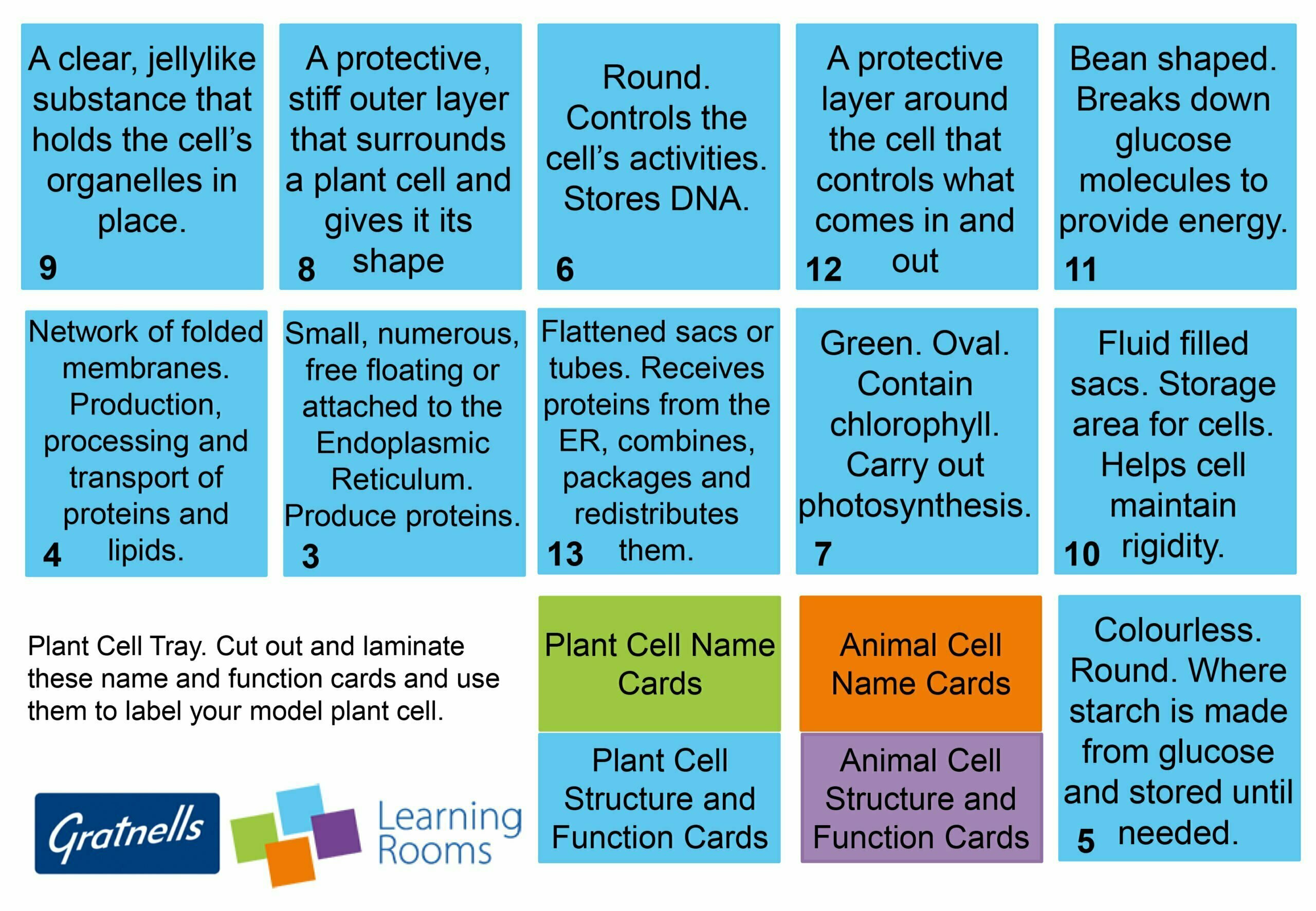Animal and plant cells
Fuchsia pink and jolly lime shallow (F1) trays double as perfect animal and plant cells in this practical cell biology challenge.


You will need (per team of 4):
- 1 x Fuchsia pink shallow (F1) tray to use as the animal cell
- 1 x Jolly Lime shallow (F1) tray to use as the plant cell
- 1 x Shallow (F1) tray with office insert and lid for parts and labels storage and organisation
- 2 x Scissors
- Laminated name labels for animal and plant cell organelles
- Laminated structure and function labels
- Recycled materials and other props to represent each part of the plant and animal cells (e.g. bottle lids, string, pipe cleaners, mini pom poms in different sizes and colours, selection of coloured paper and card, small stones, string, sticky spots, Lego , paper clips, dried macaroni pasta, a selection of playdoh, a variety of sweets etc).
Preparation:
- Print, cut out and laminate the name and function labels.
- Organise all recycled materials, props, scissors and laminated cards into the shallow (F1) tray with office insert and put the lid on.
- Stack the tray on top of the empty fuchsia pink and jolly lime trays.
This activity can be repeated as many times as required and can be completed by individuals or small groups. If using as an individual challenge, increase the amount of time allocated to complete the activity. You may wish to replace the card/paper between groups if the participants have cut it up too much.
What to do:
- Use the items in the shallow tray to create a model animal cell in the fuchsia pink tray and a model plant cell in the jolly lime tray.
- Label each part of the model with its name (green labels for the plant cell organelles, orange for the animal).
- Label each part of the model with its function (blue labels for the plant cell organelles, purple for the animal).
- Take a photograph of your completed, labelled, animal and plant cells to evidence your work.
- Record the letters and numbers of the matched parts and functions. e.g. W 5.
Tidy up time:
- Return all items and labels to the shallow tray with the office insert and replace the lid.
Answers:
Plant Cell Tray
A 5
B 6
C 4
D 7
E 3
F 11
G 10
H 8
J 1
K 13
L 9
M 2
N 12
Animal Cell Tray
A 14
B 8
C 1
D 4
E 9
F 3
G 11
H 12
J 2
K 7
L 6
M 13
N 5
P 10
Other things to try…
- Talk about why you have chosen the different props or objects to represent each part of the animal and plant cell models and what you know about the function of each part. Can you suggest, find or make other objects that would represent the organelles better?
- Turn the whole tray into a cell by filling it with clear, pink or green jelly to represent the cytoplasm and submerge the cell organelles into the jelly. Present a finished tray to your students or classmates and challenge them to separate out the parts using tweezers or spoons into an empty tray before identifying and labelling each one with their name and function.
- Which organelles do animal and plant cells have in common? Which are different?
- Use secondary sources of evidence, such as books or the internet, to find out more about how each part of the animal and plant cells works. Write your own, additional, function cards and add them to your model.
- Remove some of the labels and descriptions to adapt the activity for lower age or ability participants. i.e. retain only cell wall, cell membrane, cytoplasm, nucleus, vacuole, mitochondria and chloroplasts. Create additional challenge for higher age or ability pupils and ask them to research and add additional plant and animal cell organelles to the models and make corresponding name and structure and function cards.
- If you like this activity and want to know more about respiration and photosynthesis, have a go at our ‘Pathways’ What’s In My Tray activity here.
- Share your animal and plant cell photographs on social media using #WhatsInMyTray
Health & Safety
As with all Gratnells Learning Rooms What’s In My Tray activities, you should carry out your own risk assessment prior to undertaking any of the activities or demonstrations.


